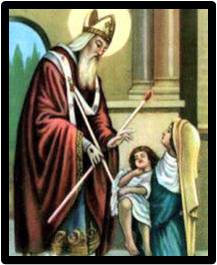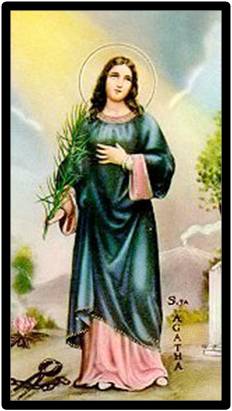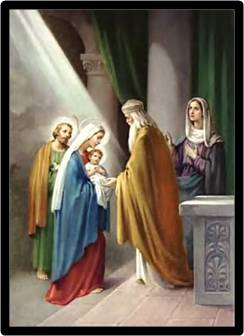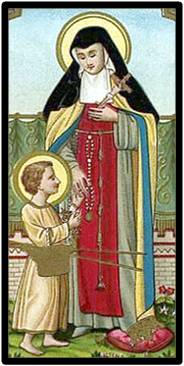
St. Blase was an Armenian who came from a rich family and was given a Christian education. As a young man, Blase thought about all the sufferings and troubles in the world. He found that only spiritual joys can make a person really happy.
He became a priest and then bishop of Sebaste in Armenia which is now modern Turkey. Blase worked wholeheartedly to make his people holy and happy. He prayed and preached; he tried to help everyone.
Later he lived in a cave on Mount Argeus. He had the gift of healing and both men and animals were brought to him to be healed. According to legend, sick animals would come to him on their own for help, but would never disturb him at prayer.
When the governor, Licinius, began to harass the Christians, St. Blase was captured. He was sent to prison to be beheaded. On the way, people crowded the road to see their beloved bishop for the last time. He blessed them all, even the pagans.
A poor mother rushed up to him. She begged him to save her child who was choking to death from a fishbone. The saint whispered a prayer and blessed the child. He worked a miracle that saved the child’s life. That is why St. Blase is called upon by all who have throat diseases. On his feast day, we have our throats blessed. We ask him to protect us from all sicknesses of the throat.
In prison, the saintly bishop converted many non-believers. No torture could make Blase give up his faith in Jesus. Thrown into a lake to drown, Blase stood on the surface and invited his persecutors to walk out and prove the power of their gods; they drowned. When he returned to land, he was beheaded. Now St. Blase is with Jesus forever.

A beautiful Christian girl named Agatha lived in Sicily in the third century. The governor heard of Agatha’s beauty and brought her to his palace. He wanted to make her commit sins, but she was brave and would not give in. “My Lord Jesus Christ,” she prayed, “you see my heart and you know my desire. I am all yours. Save me from this evil man. Make me worthy of winning out over the devil.”
The governor then sent Agatha to the house of a wicked woman and hoped she would become bad too. But Agatha had great trust in God and prayed all the time. She kept herself pure. She would not listen to the evil ideas of the woman and her daughters.
After a month, she was brought back to the governor. He tried again to win her. “You are a noblewoman,” he said kindly. “Why have you lowered yourself to be a humble Christian?”
“Even though I am a noble,” answered Agatha, “I am a slave of Jesus Christ.” “Then what does it really mean to be noble?” the governor asked. Agatha answered, “It means to serve God.”
When he realized that she would not sin, the governor became angry. He had Agatha whipped and tortured. As she was being carried back to prison she whispered, “Lord, my Creator, you have protected me from the cradle. You have taken me from the love of the world and given me patience to suffer. Now receive my soul.” Agatha soon died a martyr at Catania, Sicily, in the year 250.




